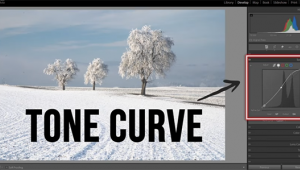Olympus’ EVOLT E-500; Ease Of Use And Versatility In An Affordable 8-Megapixel Digital SLR
Pros
· High resolution, pleasing color rendition, snappy contrast, superb image
quality at ISO 100-400
· Supersonic Wave filter is highly effective in removing dust from CCD
sensor
· Overall speed should satisfy most photo enthusiasts
· Vast range of features to satisfy both novices and experienced digital
shooters
· Two lens kit offers excellent value
Cons
· Obvious digital noise at ISO 800, problematic noise at ISO 1600; new
NR (Noise Reduction) filter blurs image details
· Some features less than ideal: complicated depth of field preview, autofocus-assist
available only with flash, small viewfinder, only three focus detection points
 |
An upgrade over the EVOLT E-300 released a year earlier, the E-500 features
more traditional SLR styling, a few technical enhancements, and several new
amenities. The external differences are obvious at even a quick glance. Instead
of the long and flat body, the E-500 features a typical penta-prism hump, more
logical control layout, and a larger LCD monitor. A more versatile and reliable
8-megapixel camera, the E-500 is just as affordable. It retains all of its predecessor's
features, including the Four-Thirds format (17.3x13mm) Kodak CCD and the unique
"Supersonic Wave" filter that removes dust with vibration.
The specifications indicate many upgrades over the E-300. In my estimation,
the most noteworthy include: a 0.3 lb weight reduction, a more sophisticated
and reliable 49-zone evaluative metering system, extra features for exposure
control, manual focus bracketing, plus additional options for black and white
effects.
Exposure & Color Accuracy |
|
 |
|
|
Design And Capabilities
Although it's one of the smallest and lightest digital SLRs on the market,
the E-500 has a solid feel that exudes high quality. That was achieved with
an aluminum and plastic exterior, aluminum die-cast chassis, and a metal lens
mount. Although the body is compact, the handgrip is large and well sculpted.
The viewfinder seems very small, however. The LCD monitor is oversized, great
for image playback and for viewing the various menu items that are shown with
easy-to-read symbols and numbers. The camera sports analog controls for most
of the frequently used features, all conveniently placed.
First time SLR buyers will find the E-500 easy to use thanks to the 15 Program
modes selected with the Scene setting on the mode dial. Information as to the
intent of each is displayed on the LCD monitor. For example, Night Scene program
is described as: "For shooting illuminated scenes in evening or night.
Uses a slower shutter speed than in normal shooting." When appropriate,
the built-in flash pops up automatically. All of this is quite simple, great
for the novice without a full understanding of advanced photographic concepts.
Portrait Program Mode |
|
 |
|
|
Naturally, Olympus provides many advanced options as well, including some
we do not expect in a $649 camera. Most of those functions are accessed with
the five-part electronic menu. In spite of the logical layout, however, navigation
is tedious if only because of the sheer number of items. And some of the features
definitely call for a review of the instruction manual for full specifics as
to their purpose and value. After an initial setup to meet personal preferences
however, there's rarely a need to access the menu.
Evaluation: Anyone trading up from a compact digicam will appreciate
the increased number of external controls. While they make the camera
appear to be more "complicated," they reduce the need
for hunting through the menu. In fact, I wished that Olympus had provided
two additional buttons: one for quickly selecting the Capture mode (raw,
TIFF, or JPEG) and another for simpler depth of field preview activation. Some
owners may miss the ability to use the HLD-3 vertical grip, an
E-300 accessory that's incompatible with the E-500. In other respects,
the E-500 is a fine example of intelligent design, probably based on input from
photographers who own previous E-series bodies.
Performance And Speed
During the test period, I made hundreds of images indoors and out in order to
test reliability, speed, and image quality. Start up took over 2 seconds, including
the time required for automatic sensor cleaning. Outdoors, the camera responded
almost instantly without any noticeable shutter lag. Autofocus performance was
excellent in both single shot and continuous autofocus; the system had no difficulty
in tracking the motion of cars approaching my position. Unlike some of its competitors,
the E-500 employs only a three-point autofocus sensor that does not cover a
wide area. When I was shooting horizontal photos, that arrangement was fine
except for subjects far off-center; in vertical framing, however, extra focus
detection points would have been useful.
Dim Light Performance |
|
 |
|
|
In darker locations, autofocus response remained reliable, with or without
the focus assist (flash) feature. During a native powwow competition in an indoor
arena, focus acquisition took a 1/2 sec, about average for a digital SLR. My
only real complaint was that the Continuous system had some difficulty tracking
moving subjects in the low-light environment.
In Continuous Drive mode, I was able to shoot four raw images or five Super
High or High Quality JPEGs in a burst, at 2.5 fps. Because I was using very
fast CompactFlash cards, the camera was ready to take another three shots after
a 1-second delay for clearing its buffer (memory). It could take a full five
shot burst after a 2.5-second delay. That may not qualify as "super fast"
but it's fine for photo enthusiasts who do not frequently shoot sports
action.
Maximum buffer clearing speed was achieved with a remarkably fast 1GB SanDisk
Extreme III CompactFlash card. When I used a 2GB Lexar Pro 80x CompactFlash
card, the process was almost as quick. Switching to a 256MB xD-Picture Card
produced a slowdown. A full 6 seconds were required after a full JPEG burst,
although the camera allowed for taking a shot or two during that time, minimizing
frustration. If you want to shoot bursts in Raw Capture mode, be sure to buy
a high-speed card. Using an xD-Picture Card (or an inexpensive CompactFlash)
results in a 10- or 12-second wait before you can snap off another four frame
raw series.
Evaluation: In terms of overall speed, low-light autofocus and tracking
focus, the EVOLT E-500 rates in the middle of the pack among recent digital
SLRs in the sub-$850 (street price) category, qualifying it as a competent performer.
- Log in or register to post comments
































